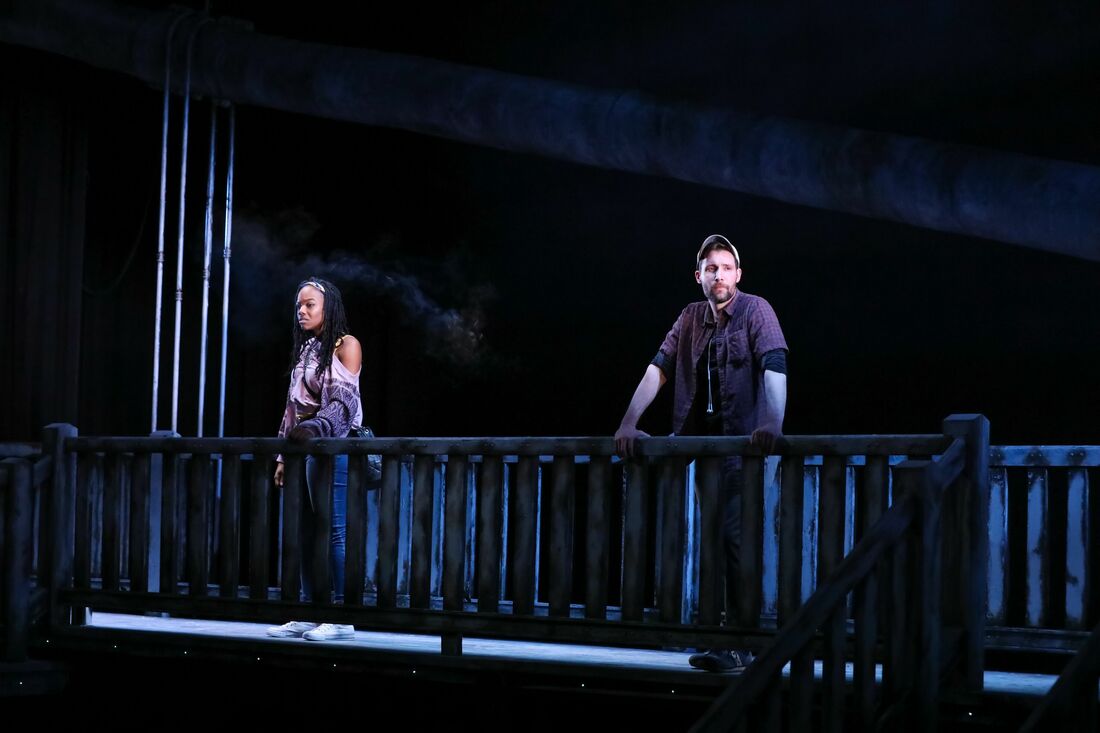|
This season, which PlayMakers Repertory Company has themed as “shifting ground,” has brought three world premieres to the Triangle. Its third one, Jump, written by Charly Evon Simpson and directed by Whitney White, certainly fits in with this exploratory theme due to its unique take on mental illness and its surprising structure. The play begins by introducing the audience to Fay (April Mae Davis), a young woman who has been summoned to her childhood home. Along with her father (Trevor Johnson) and her sister, Judy (Shanelle Nicole Leonard), Fay has been tasked with cleaning the home out to prepare it to be sold. As the narrative unfolds, viewers learn that the family isn’t just saying good-bye to their home. Instead, they are also grappling with the loss of their mother. At least, that’s what the seems to be happening on the surface. But, as viewers quickly learn, nothing is quite as it seems in Simpson’s interesting and twist-and-turn-filled story. What is clear is that Fay is grappling with…something. Lights fade and flicker around her, thanks to all-around solid lighting design from Amith Chandrashaker. Her memory sometimes sees things in a loop, and she is always drawn to the foreboding bridge looming large and sinister in the background, a place where she begins to spend more and more time. And, speaking of that bridge, scenic designer Alexis Distler has done an impressive job of making the bridge an overwhelming presence, one that draws attention away from the family’s home set and even expands in front of the home as the script calls for. Distler ensures that the bridge and the family’s view of it, particularly Fay’s, disrupts these characters in every way, which is exactly what the script and its subject matter warrant. April Mae Davis as Fay and Adam Poole as Hopkins. HuthPhoto. While attempting to unravel the mystery of what is happening with Fay and what fate her actions are ultimately leading up to, viewers are also privy to the intricacies of this family’s relationships. Most interesting is Fay’s close-but-somewhat-strained relationship with her sister. The two seem different in many ways, with Fay coming across as the troubled one and Judy as the responsible, together one. Despite their differences, the two share a vibrant, sisterly bond, brought nicely to life by the chemistry between Davis and Leonard. Davis plays her character as quirky and understandably confused while Leonard effectively makes Judy the kind of sister everyone wants to have.
One more relationship enters the mix in this 90-minute production: the relationship between Fay and an equally troubled young man she meets on the bridge, Hopkins (Adam Poole). As their bond grows and shifts, their conversations help viewers to slowly understand more about Fay and what is really going on. Of course, no one knows for sure until the shocker of an ending. The twist is sharp and unexpected enough to make viewers go back through their brains, recounting what they just saw and trying to make sense of the truth. In this way, the play cleverly and effectively mirrors the lives of many who have experienced loss and the devastation of choices that can’t be taken back. To reveal too much would be unfair to viewers of this new and unique play. Gripping, powerful, and timely, it is one worth watching and experiencing from beginning to end.
0 Comments
|
TAR
We love the arts. We write about them. Founded 2018. Categories
All
Archives
January 2024
|



 RSS Feed
RSS Feed